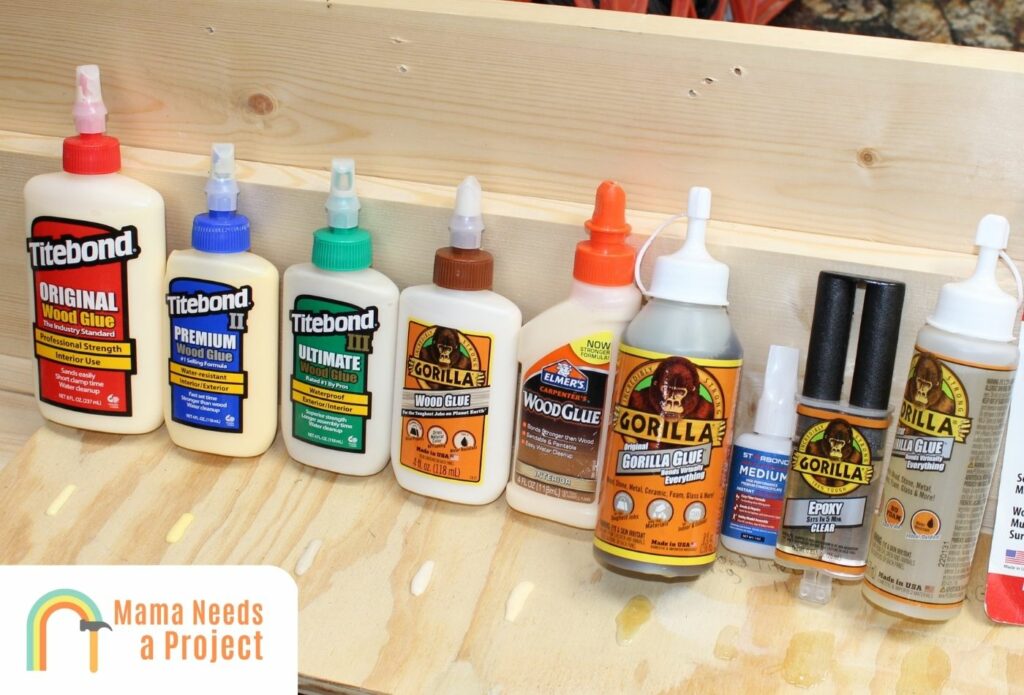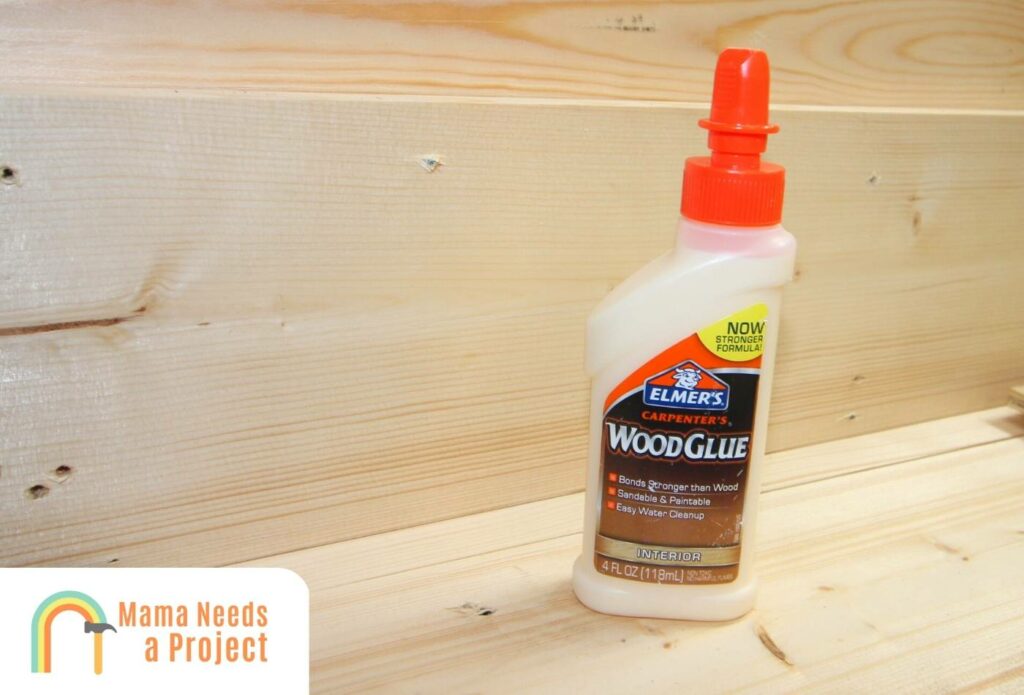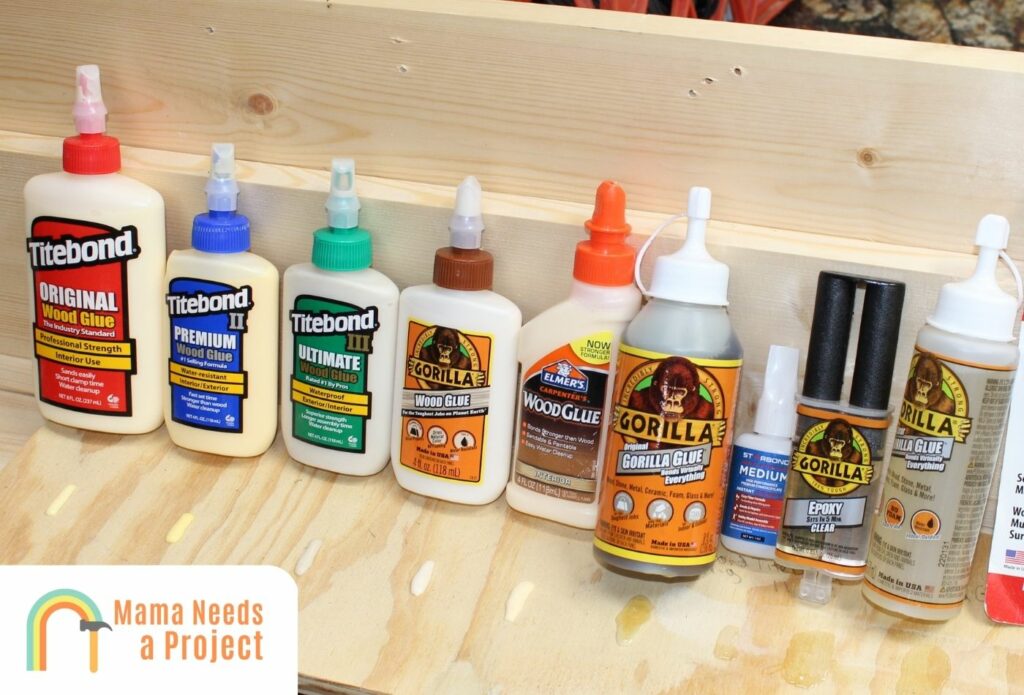If you’re wondering how long it takes for Elmer’s wood glue to dry, you’ve come to the right place! When you’re working on a woodworking project, it’s crucial to know how much time you need to set aside before moving on to the next step. So let’s dive in and discover the answer together!
Wood glue is an essential adhesive used by both professionals and DIY enthusiasts in various woodworking projects. Whether you’re bonding two pieces of wood together or repairing a broken wooden item, Elmer’s wood glue is a popular choice due to its reliability and effectiveness. But just how long does it take for this glue to dry and provide you with a strong, durable bond?
In this article, we will explore the drying time of Elmer’s wood glue and provide you with some helpful tips and tricks to speed up the process. So sit tight, and let’s unravel the mystery of how long it takes for Elmer’s wood glue to dry!

How Long Does Elmer’s Wood Glue Take to Dry? Exploring the Drying Time of a Popular Woodworking Adhesive
When it comes to woodworking projects, finding the right adhesive to bond pieces of wood together is essential. One popular choice among woodworkers is Elmer’s wood glue, known for its strong bond and versatility. However, one common question that arises is how long it takes for Elmer’s wood glue to dry. In this article, we will delve into the factors that affect drying time, the different types of Elmer’s wood glue available, and provide tips on how to ensure optimal drying. So, let’s get started and discover everything you need to know about the drying process of Elmer’s wood glue.
The Factors Influencing Elmer’s Wood Glue Drying Time
1. Type of Wood Glue: Elmer’s offers different types of wood glues, including their regular wood glue, Max wood glue, and Carpenter’s wood glue. Each variant has its own specific drying time, which can range from a few minutes to several hours.
2. Ambient Temperature and Humidity: Both the temperature and humidity of the environment can significantly impact the drying time of Elmer’s wood glue. Higher temperatures and lower humidity levels generally result in faster drying, while lower temperatures and higher humidity can prolong the drying process.
3. Wood Porosity: The porosity of the wood surface being glued affects the drying time. Highly porous woods, such as softwoods, may soak up the glue more quickly, leading to faster drying, while less porous woods, like hardwoods, may require additional drying time.
The Different Types of Elmer’s Wood Glue and Their Drying Times
1. Elmer’s Regular Wood Glue: This is the most commonly used wood glue, known for its strong bond and versatility. It typically takes anywhere from 20 to 30 minutes to dry, depending on various factors such as temperature and humidity.
2. Elmer’s Max Wood Glue: With a faster drying time than regular wood glue, Elmer’s Max is a popular choice for projects that require a quick bond. It sets in approximately 10 to 15 minutes, allowing for faster project completion.
3. Elmer’s Carpenter’s Wood Glue: This specialty wood glue is designed for heavier-duty applications and offers high-strength bond. The drying time for Carpenter’s wood glue ranges from 12 to 24 hours, providing ample time for adjustments before the glue fully sets.
Tips for Ensuring Optimal Drying of Elmer’s Wood Glue
1. Prepare and Clean the Wood Surface: Before applying Elmer’s wood glue, ensure that the surfaces to be bonded are clean, free from dust, and properly prepared. This will help to maximize the adhesive’s effectiveness and facilitate faster drying.
2. Apply Adequate Pressure: Properly clamping or applying pressure to the glued surfaces is crucial for a strong bond and optimal drying. Use clamps or weights to apply even pressure, ensuring that the pieces of wood are held together securely during the drying process.
3. Allow Sufficient Drying Time: Be patient and give Elmer’s wood glue enough time to fully dry and cure. Rushing the process can compromise the strength of the bond and affect the overall quality of your woodworking project.
At What Point Is Elmer’s Wood Glue Fully Cured?
While Elmer’s wood glue may dry to the touch within the stated drying times, it is important to note that full curing may take longer. For the regular and Max wood glue variants, a curing time of 24 to 48 hours is recommended before subjecting the bond to heavy stress or loads. Carpenter’s wood glue, known for its high strength, may require up to 72 hours of curing time for optimal performance. Waiting for the full curing period ensures a stronger bond and better longevity of your woodworking projects.
Conclusion
Elmer’s wood glue is a reliable and widely used adhesive for woodworking projects. The drying time of Elmer’s wood glue varies depending on factors such as the type of glue, ambient temperature, humidity, and wood porosity. Understanding these factors will help you plan your projects effectively and achieve the desired bond strength. By following the tips provided and allowing sufficient curing time, you can ensure the best results when using Elmer’s wood glue. Whether you’re a beginner or an experienced woodworker, Elmer’s wood glue is a trusted choice that delivers strong bonds and enhances the quality of your woodworking creations.
Key Takeaways: How long does Elmer’s wood glue take to dry?
2. The drying time may vary depending on factors such as temperature and humidity.
3. It is recommended to clamp or hold the glued pieces together for at least 30 minutes to ensure a strong bond.
4. Waiting for a full cure of 24 hours will provide the strongest bond.
5. Clean up any excess glue before it dries to avoid unsightly residue.
Frequently Asked Questions
Welcome to our Frequently Asked Questions section about drying time for Elmer’s Wood Glue. If you’re wondering how long it takes for Elmer’s Wood Glue to dry, you’re in the right place! We’ve compiled some common questions and provided detailed answers to help you understand the drying process of this popular wood adhesive.
1. Why does Elmer’s Wood Glue take longer to dry than other glues?
Elmer’s Wood Glue is specifically formulated for woodworking projects, which often require a strong bond and durable finish. This particular glue takes longer to dry because it needs to penetrate the wood fibers in order to create a solid bond. The longer drying time ensures a secure and permanent connection between the wood pieces.
While it may seem inconvenient to wait longer for the glue to dry, this extra time allows for better adhesion and stronger results, making it ideal for woodworking projects that require a sturdy bond.
2. How long does Elmer’s Wood Glue take to dry for typical woodworking projects?
The drying time for Elmer’s Wood Glue can vary depending on certain factors such as temperature, humidity, and the type of wood being used. In general, this glue takes about 12-24 hours to fully dry and cure. However, it’s important to note that larger and more complex projects may require additional drying time.
For best results, it’s recommended to allow the glued wood pieces to sit undisturbed for at least 24 hours to ensure a strong bond. Keep in mind that colder temperatures and higher humidity levels can extend the drying time, so it’s always a good idea to check the manufacturer’s instructions for specific guidance.
3. Can I speed up the drying process of Elmer’s Wood Glue?
While patience is key when it comes to allowing Elmer’s Wood Glue to fully dry, there are a few techniques you can try to help speed up the process. Firstly, you can increase the air circulation in the drying area by using a fan or opening windows. This helps to remove excess moisture, expediting the drying time.
Additionally, using a dehumidifier in humid environments can help reduce the drying time. It’s important to remember that while these methods may speed up the drying process, it’s still crucial to allow sufficient time for the glue to cure completely to ensure a strong and durable bond.
4. Can I use Elmer’s Wood Glue on different types of wood?
Yes, Elmer’s Wood Glue is designed to be compatible with a wide range of wood types. Whether you’re working with softwoods, hardwoods, or even plywood, this adhesive can be used effectively. However, it’s always advisable to do a small test application on a scrap piece of wood before using it on your actual project to check for any potential compatibility issues.
Remember to always follow the manufacturer’s instructions and to ensure that the surfaces being glued are clean, dry, and properly prepared for optimal bonding.
5. Can I paint over Elmer’s Wood Glue once it’s dry?
Yes, you can paint over Elmer’s Wood Glue once it’s fully dry. This glue creates a versatile surface that can be easily painted over with most types of paints or stains. However, it’s important to wait for the glue to fully dry and cure before applying any paint or finish to the wood.
Once completely dry, you can sand the glued area lightly and proceed with your desired finishing techniques. Remember to always follow the instructions provided by the glue manufacturer and test the paint or stain on a small, inconspicuous area before applying it to the entire project.

Summary
So, how long does Elmer’s wood glue take to dry? Well, it depends on a few factors. First, it’s important to know that Elmer’s wood glue comes in different types, like regular white glue and carpenter’s glue. Second, the drying time can be affected by the temperature and humidity in the room. In general, Elmer’s wood glue can take anywhere from a few minutes to several hours to dry completely. It’s best to wait at least 24 hours before putting any stress on the glued object. Don’t rush it!
Remember, when using Elmer’s wood glue, make sure to apply a thin, even layer on the surfaces to be joined. Press the pieces together firmly and wipe away any excess glue. Lastly, be patient and let the glue dry completely to ensure a strong, long-lasting bond.
